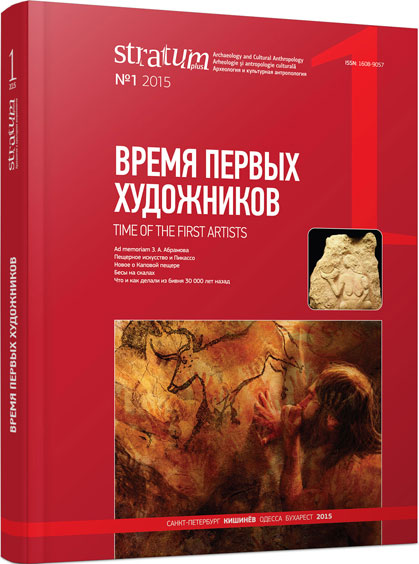Роль костяных и кремневых наконечников в охотничьем метательном вооружении стоянок позднего верхнего палеолита Быки (Курская область, Россия)
Role of Bone and Flint Points in Hunting Projectile Weaponry of the Late Palaeolithic Sites of Byki (Kursk Oblast, Russia)
Author(s): Natalia B. Ahmetgaleeva, Yuri E. DemidenkoSubject(s): History, Archaeology
Published by: Издательский дом Stratum, Университет «Высшая антропологическая школа»
Keywords: Seym River basin; Late Palaeolithic; Byki sites; hunting weaponry
Summary/Abstract: The article deals with bone and flint hunting projectile points of the Late Palaeolithic sites of Byki, situated in the Seym basin (Kursk oblast of Russia) and dated to between 18 000—14 000 uncal. years BP. The flint assemblages of Byki 1 and 7 (layers Ia & I) are charactrized by the presence of geometric microliths. The great similarity of the flint artifacts points to their industrial unity. The analysis of the osteological and paleogeographic evidence leads to the conclusion that the faunal assemblages of the sites belong to the boreal sub-group of the mammoth theriocomplex of Late Valdai. The basic game species were hare, Arctic fox, reindeer and horse. The authors pay particular attention to the question of the relationship between bone and stone hunting tools.
Journal: Stratum plus. Археология и культурная антропология
- Issue Year: 2015
- Issue No: 1
- Page Range: 205-221
- Page Count: 17
- Language: Russian
- Content File-PDF

